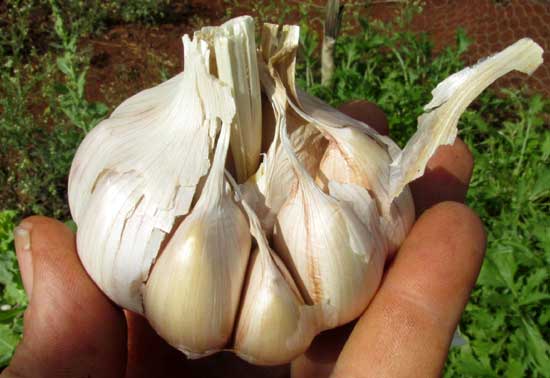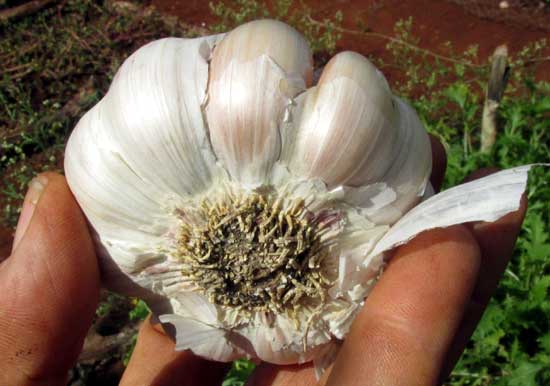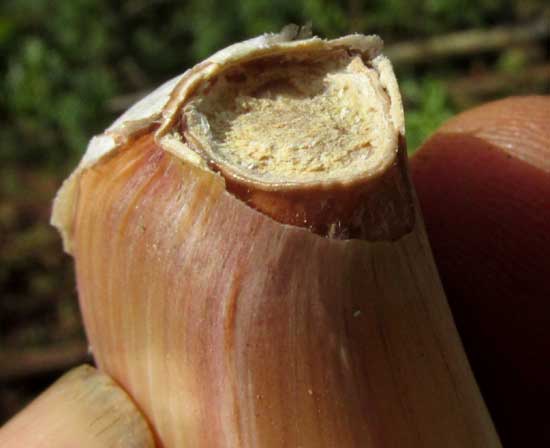Excerpts from Jim Conrad's
Naturalist Newsletter
from the February 26, 2017 Newsletter issued from Rancho Regenesis in the woods ±4kms west of Ek Balam Ruins; elevation ~40m (~130 ft), N20.876°, W88.170°; north-central Yucatán, MÉXICO
PLANTING GARLIC
This week at the frutaría in Temozón I bought an especially large, good looking bunch of garlic, and planted the cloves. Below, you can see the purchase:

Botanically, the whole item pictured above is regarded as a bulb which, when matured and hung to dry, separates into several cloves, each clove enclosed in a silky, white envelope or skin. In the picture, the stiff, dry, vertical item surrounded by the cloves is the parent plant's stem, which has been cut off. Looking at the bulb from below, you can see the parent plant's former roots, as shown below:

Each individual clove when planted produces a new garlic plant. Before planting, each clove must be broken from the cluster's root base. Below, you can see what a broken-off clove's bottom looks like:

When the cloves are broken off, the clove's bottom must be kept intact, because that's where the new plant's roots will arise. If the clove is cut off with a knife, leaving behind the little collar visible in the picture on the clove's bottom, no roots will sprout on the planted clove.
This planting is a kind of test. Garlic grows well in a wide range of climates, but it's known to have problems where it's too hot or humid, or where there is a lot of rainfall -- like here, during the rainy season, which will begin in a few weeks.
Garlic needs a lot of sunlight, and grows best in well dug-over, crumbly soil, the best soil type being a sandy loam. Our soil, being derived from limestone, is not at all loose and crumbly, unless mixed with plenty of organic matter and kept moist -- which might be a tricky situation, since garlic suffers with frequent waterings.
Keeping these points in mind, I planted the cloves with their pointed ends upward, their bottoms about two inches deep (5cm). Then I gathered dried leaves from the ground in the forest to cover them as mulch. I plan to water about once a week, trying to keep the soil below the mulch moist, but not wet.